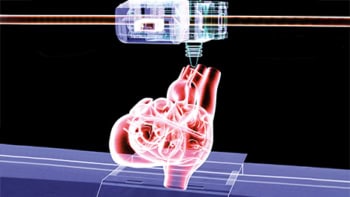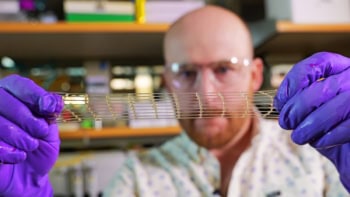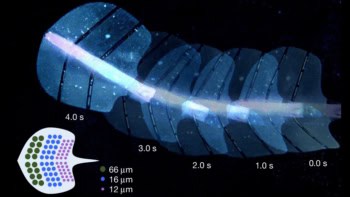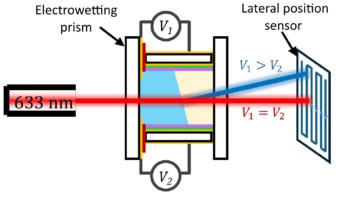
A team of US-based researchers has pioneered an innovative 3D printing technique that uses ultrasound waves to create objects from sonically cured inks. The new approach, dubbed deep-penetrating acoustic volumetric printing (DAVP), could potentially enable printing to be carried out inside the human body – paving the way for a range of minimally invasive procedures such as tissue engineering or targeted localized drug delivery.
Publishing their findings in Science, the researchers describe how they successfully used DAVP to perform 3D printing at centimetre depths through biological tissue and create intricate structures within a variety of different materials – thus demonstrating its effectiveness with materials like hydrogels and nanocomposites, which are crucial in biomedical applications.
As co-senior author Junjie Yao from Duke University’s Photoacoustic Imaging Lab (PI-Lab) explains, the newly created sonicated ink (or sono-ink) contains a mixture of polymers, particles and chemical initiators specifically designed to form a gel when the ink absorbs sound waves. When exposed to high-intensity focused ultrasound, these self-enhancing fluids solidify in precise patterns, enabling the creation of complex structures.
“This is achieved through the unique properties of the sono-inks, which are formulated for optimal response to ultrasound, enabling a deeper penetration at higher resolution compared to conventional light-based printing methods,” he says.
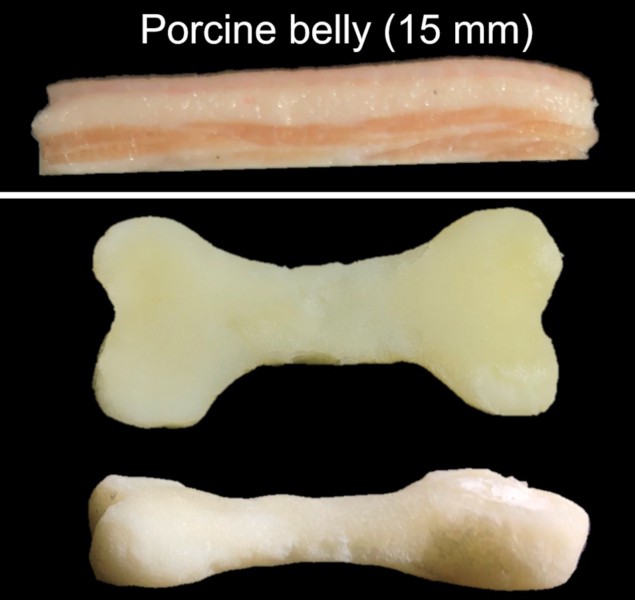
According to Yao, a key finding of the research is the discovery that the new technique overcomes the physical and optical limits of existing approaches to additive manufacturing, and enables users to “print at depths and in materials previously unachievable by other 3D printing methods”, in particular light-based approaches that are ineffective in opaque or optically scattering media.
The team also speculates that, amongst other things, the technique could help to treat bone defects through the in situ fabrication of artificial bone – and that printed materials formed with sono-ink could elute drugs, thus facilitating localized chemotherapy to prevent the recurrence of tumours after resection.
“[The technique] opens up significant potential applications in clinical and healthcare settings, such as creating scaffolds for tissue engineering, or targeted localized drug delivery systems within the body,” says Yao.
Improved patient outcomes
Elsewhere, co-senior author Yu Shrike Zhang, at Brigham and Women’s Hospital, Harvard Medical School, points out that the primary advantage of DAVP in clinical settings is its minimally invasive nature. In particular, he draws attention to the fact that the new technique can “potentially print biocompatible materials directly inside the body” and thus help mitigate the “invasive and risky” nature of many traditional surgical procedures.
“This could revolutionize treatments by allowing for precise, targeted interventions without traditional surgery, significantly reducing recovery times and improving patient outcomes. Additionally, the versatility in materials and the ability to work in opaque environments make it particularly suitable for varied medical applications,” he says.

Paintable bioactive ink heals wounds of any shape or size
Moving forward, Zhang confirms that the team plans to further refine the DAVP technique, with a particular focus on optimizing the sono-inks and the ultrasound printing technology to deliver even greater precision, versatility and biocompatibility.
“Collaborations with medical researchers are planned to explore the practical application of this technology in clinical and healthcare settings,” he adds. “We aim to develop prototypes for specific medical applications, such as regenerative medicine and targeted localized drug delivery, and conduct trials to evaluate their effectiveness and safety in a clinical environment.”
